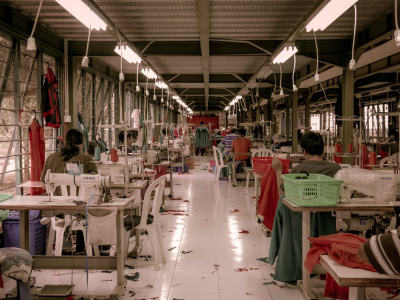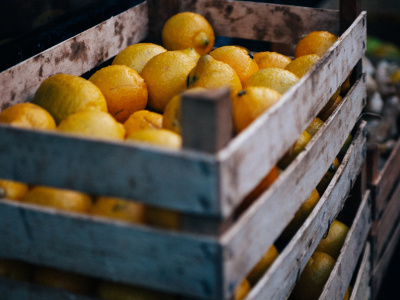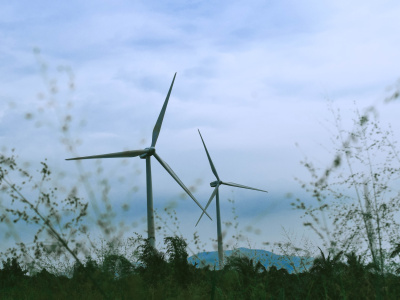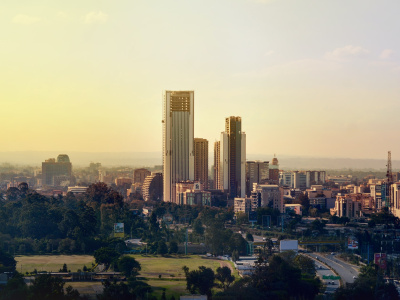
How Kenya and the EU can close the loop on textiles
Countries exporting textiles to the EU market face new policies and requirements as the bloc moves towards a greener and circular economy. Kenya, with its growing textiles industry and ambition to become greener, can take advantage of the changing market landscape. Drawing from their research and looking back at a recent webinar, Nadia Ashraf and Jeske van Seters argue that Kenya and the EU can work together to support the transition towards circular textiles, building on a long-standing partnership.
Last week, Kenya and the EU announced a new partnership agreement. It contains the most ambitious sustainability provisions ever between an African country and the EU, with mutual environmental commitments to be supported by reinforced cooperation and development assistance.
This shortly followed the European Parliament’s adoption of recommendations to end fast fashion and help consumers make more ethically responsible and sustainable choices, based on the EU strategy for sustainable and circular textiles, which has implications for partner countries exporting their textiles to the EU. These recommendations received a massive majority of the votes – no less than 95% – on 1 June, which gives a strong impetus for a swift and effective implementation of the EU strategy.
|
All products placed on the EU market are:
|
Because of its thriving textiles industry and growing share of textile exports to the EU market, Kenya is one of the countries that stands to be impacted. However, in other sectors such as horticulture, exports into Europe have had high growth rates despite higher sanitary and phytosanitary standards, and Kenya already has taken significant steps toward building a greener economy. The recently proposed Climate Change (Amendment) Bill is just one example of the country’s green growth ambition.
The changing market landscape in the EU can therefore also be an opportunity for Kenyan textile firms to invest in sustainable processes and access new and higher-value market segments. If successful, this could see benefits trickling down in a sector that is often characterised by a high share of female workers.
How can Kenya and the EU work together to promote the transition towards circular textiles? What kind of instruments, policies and partnership approaches can be used to promote a global move to a circular economy? That is the focus of our recent paper, which was presented at a webinar organised by ECDPM, Gatsby Africa and Solidaridad. We share three takeaways from the webinar, along with inspiring initiatives highlighted by the speakers and participants.

1. Invest in technology and infrastructure
The costs of green technologies are going down, which creates opportunities for green industrialisation in Kenya and beyond. European foreign direct investment can contribute to such a journey, in line with the EU’s ambition to promote European private sector engagement for sustainable development worldwide, as outlined in its Global Gateway strategy. The Kenyan government could seek closer collaboration with the EU and its member states, including their private sector.
The costs of green technologies are going down, which creates opportunities for green industrialisation in Kenya and beyond.
An example of such an approach is the work carried out by the Tony Blair Institute in bringing textile recycling technology to Ghana. The team reaches out to technology owners that look beyond profit-making, while supporting local companies and the Ghanaian government to own and drive the recycling agenda.
Investments in hard infrastructure, such as the provision of clean and affordable electricity and efficient water management, are also central to the development of the circular textile sector. Gatsby Africa is engaging with infrastructure providers and with the water, environmental and waste management sectors to develop adequate industrial spaces. The EU could mobilise public and private finance for green energy and water infrastructure through the European Fund for Sustainable Development + or other instruments, as it has done in Morocco for instance.
2. Build an ecosystem for recycling pre- and post-consumer textiles
A key bottleneck for recycling in Kenya and in other African countries is the lack of properly collected and sorted textile waste. While huge piles of textile waste are being generated locally, including the estimated 20-50% of second-hand textile imports that end up in landfill, some recyclers are importing particular types of (sorted) textile waste for recycling. There is clearly a lost opportunity here.
While huge piles of textile waste are being generated locally, some recyclers are importing particular types of (sorted) textile waste for recycling. There is clearly a lost opportunity here.
While pre-consumer waste, generated in textile and garment factories, is easier to collect and sort compared to used textiles, there is still a need for better coordination between private sector actors, including recyclers, textile producers and waste collectors. Organisations like development agencies and NGOs can play a role in connecting textile producers with recyclers, and supporting collection and sorting at factory level.
That is what Solidaridad is doing in Ethiopia. It is working with local textile producers to create a supply of pre-consumer textile waste for a fibre-to-fibre recycling company, which is also supported through training and skills development.
In the long run, it is essential to create capacity to collect, sort and recycle post-consumer waste, which is available in abundance in Kenya. African Collect Textiles, which upcycles used textiles and footwear into new textile products, is one such initiative. Initiatives like these however require support to be scaled up to allow larger volumes to be (mechanically) recycled, improving economic viability and export potential.
3. Create an enabling environment
Kenya has experience in adopting national standards benchmarked against international ones, such as the Global GAP (Good Agricultural Practices). A similar approach could be adopted for circular textiles. Exchanges with and technical support from the EU could help to further develop and implement textile-related standards.
Kenya could also advocate for the perspectives of producing countries to be better reflected in the development of upcoming international standards, as well as mutual recognition of standards. Training firms to comply with the standards will also be key. An example of this is Gatsby Africa’s work in supporting textile mills to comply with international sustainability standards to be able to access export markets.
The EU and Kenya can also exchange lessons in designing and implementing circular economy-related policies. Lessons can be learnt from the experience of EU member states in implementing textile-specific extended producer responsibility policies. On the African continent, inspiration can be taken from countries such as Ethiopia, which is designing industrial policies that integrate circularity dimensions, such as its 2019 Green Manufacturing Strategy.

The changing policy and market landscape in the EU and Kenya are promising developments to support circular textiles trade. However, the complex sustainability challenges of the textiles sector require holistic solutions and cooperation between all parties involved. The public and private sector, both in the EU and Kenya, can and need to work together better to create the right incentives and develop an effective ecosystem for circular textiles. Sustainable fashion does not stop at a country’s border.
The views are those of the authors and not necessarily those of ECDPM.













